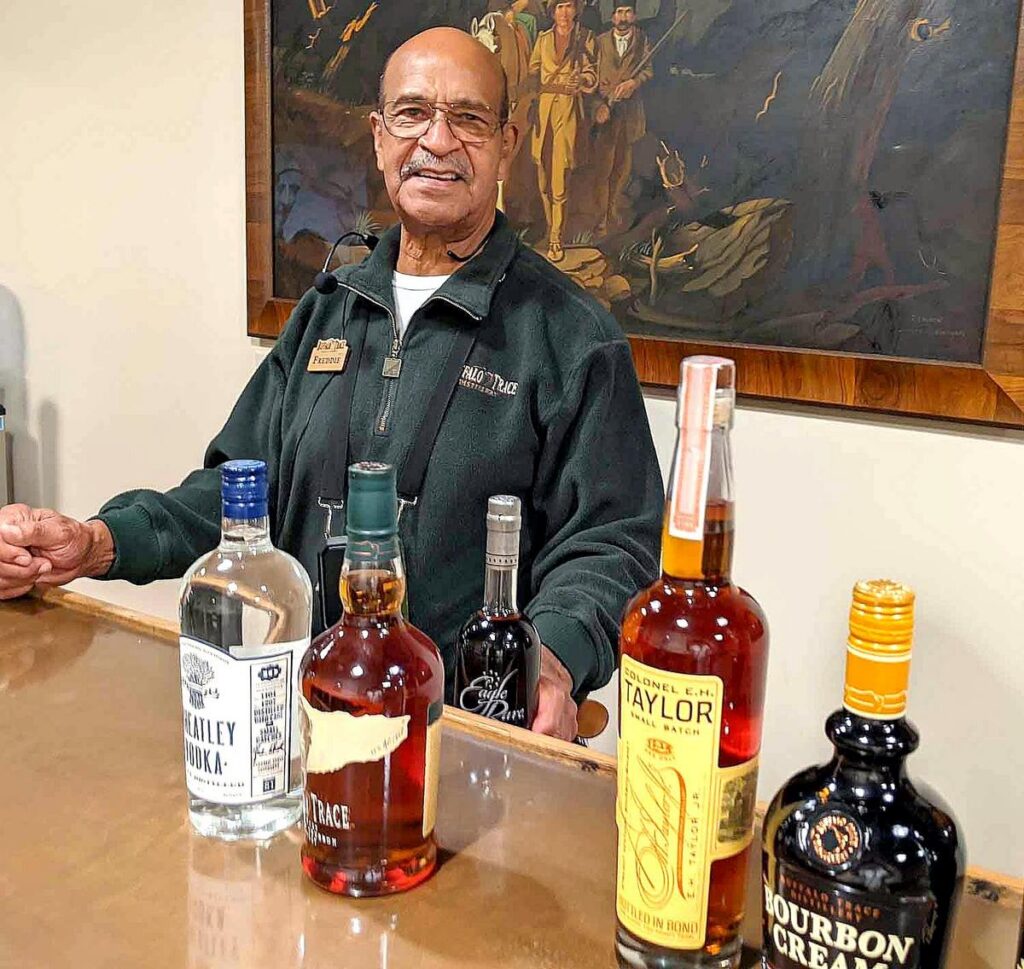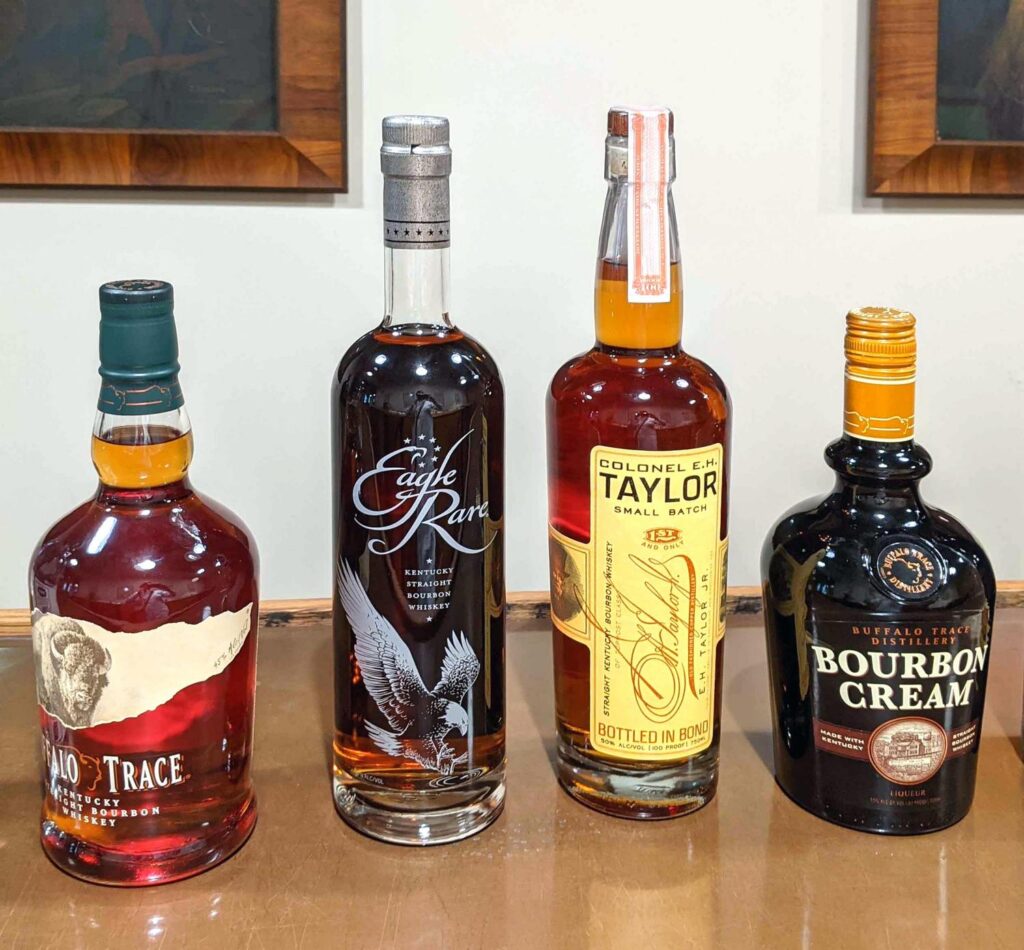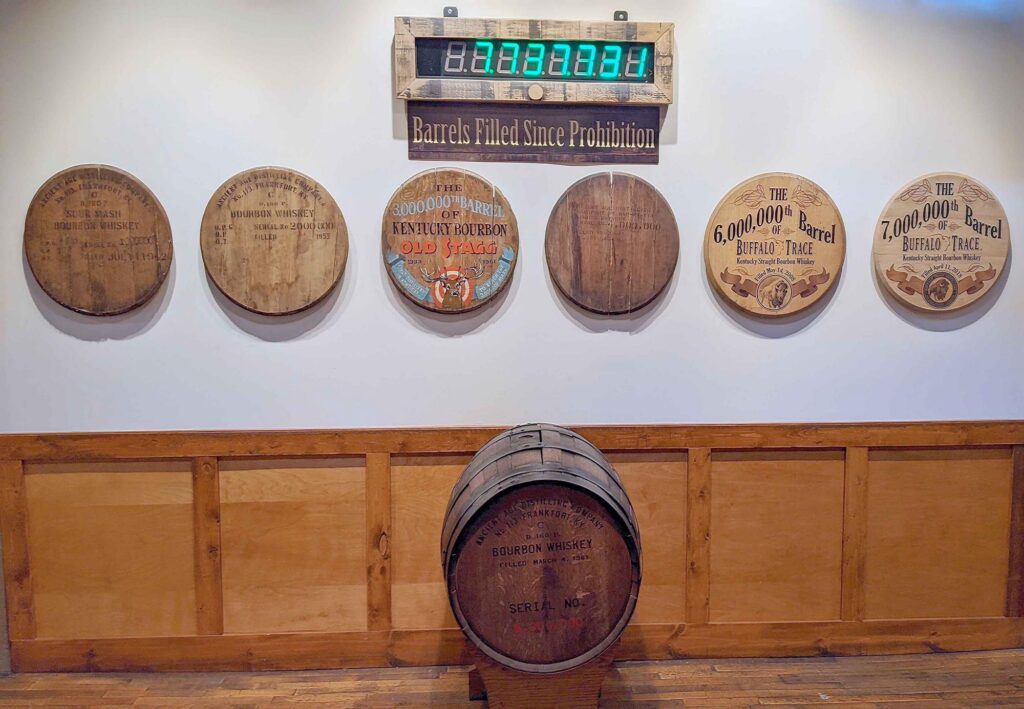
My husband David and I are the authors of two books about National Historic Landmarks in New England and in Boston. It’s no surprise that we’ve written about historic homes and grand public buildings. But we’ve also sung the praises of carousels, submarines, and a public beach. I’m convinced that National Historic Landmarks tell us a lot about regional identity—both what folks celebrate and what they feel defines them.
That brings me to Kentucky, which counts three distilleries among its 32 National Historic Landmarks. Of the three, Buffalo Trace in Frankfort (113 Great Buffalo Trace; 800-654-8471; buffalotracedistillery.com) also claims to be the oldest continuously operating distillery in America.
Daniel Swigert got things rolling when he started distilling on this site on the east bank of the Kentucky River in 1858. As you might expect, the operation has a colorful history and has changed names and owners over the years. In 1999, it assumed the name Buffalo Trace as a historic nod to the buffalo that used to ford the river at a spot near where the distillery later rose. The 2013 National Historic Landmark designation recognizes an earlier incarnation, the George T. Stagg Distillery, as a “rare example of a distillery that operated before, during, and after Prohibition.”
The free tours and tastings at Buffalo Trace are very popular. When my friend Patti and I arrived for this stop on our Bourbon country odyssey, I was glad to see that mask-wearing and temperature checks were required. In the visitor center, I watched a digital counter tick off the number of barrels filled since Prohibition. It was at 7,737,735 when I stopped watching and moved on to tasting.
WHAT A DIFFERENCE THE YEARS MAKE

“Bourbon is the only U.S. spirit spelled out in law,” explained Matt Higgins, visitor services general manager. “You can’t take short cuts. But so many flavor profiles can emerge based on how you treat the product.” He ticked off just some of the variables—length of aging, whether a barrel is aged in a brick or a metal warehouse, whether the building is cooled in the summer or warmed in the winter. And that’s not even taking into consideration of the depth of char inside the barrels or the percentages of other grains beyond the legally specified minimum of 51 percent corn.
Tour guide Freddie Johnson (right), a third-generation distillery employee, led us through a tasting of three Bourbons that all began with the same mash bill, or recipe: Buffalo Trace, Eagle Rare 10 Year Old, and E.H. Taylor Small Batch. The point was to demonstrate how different the same basic distillate became after different aging regimens.
As the name suggests, Buffalo Trace Kentucky Straight Bourbon Whiskey is the distillery’s signature spirit. It averages eight years in the barrel, well beyond the two-year legal minimum. The longer aging imparts a lot of flavor. To let the aromatics bloom, Johnson suggested adding a few drops of water to the whiskey. With my nose in the glass, I could sniff notes of vanilla and molasses and something green. A faint scent of burnt wood also came through. When I mentioned this, Johnson said I was picking up the aromatics from the wood and from the char. In my mouth, the Buffalo Trace was strikingly sweet with notes of brown sugar and toffee and a back taste of dark dried fruits. It was also very smooth and mellow for a 90 proof spirit.

DIFFERENT FACES OF SAME DISTILLATE
We moved on to Eagle Rare, which is barrel-aged for at least ten years. Johnson terms it a “sipping Bourbon,” though no one I met in the Bourbon industry insisted that some whiskies should not be diluted into cocktails. I could see what he meant. The nose on Eagle Rare has no hint of oak or char—it was all toffee, honey, and saddle leather. The whiskey is bold but the flavor is surprisingly delicate with notes of candied almonds and the roundness of a Dutch cocoa. I suspect that continuing sipping would have revealed many more subtleties right up to the point of nodding off with a smile on my face.
Finally, Patti and I tried the E.H. Taylor Small Batch Bourbon. Bottled at 100 proof, it was bright and very spicy. This would be a great Bourbon for the fall holidays, given its intense caramel and butterscotch overtones. Light on the lips, it’s spicier on the palate than its mash-bill siblings. I picked up a lot of vanilla (from the wood, I assume) and pleasant undertone of licorice. Who knew that tasting Bourbon would be like a tour of a candy store?
Since the Bourbons were already quite sweet, I was also eager to try the Bourbon Cream liqueur. I’d already been told that the felicitous mix of sweet Bourbon and rich cream is the secret to successful family gatherings. “I bring this to Christmas Eve,” one Bourbon aficionado had confided to me, “and nobody fights.”
That’s a powerful spirit! It also makes an amazing whipped cream.

